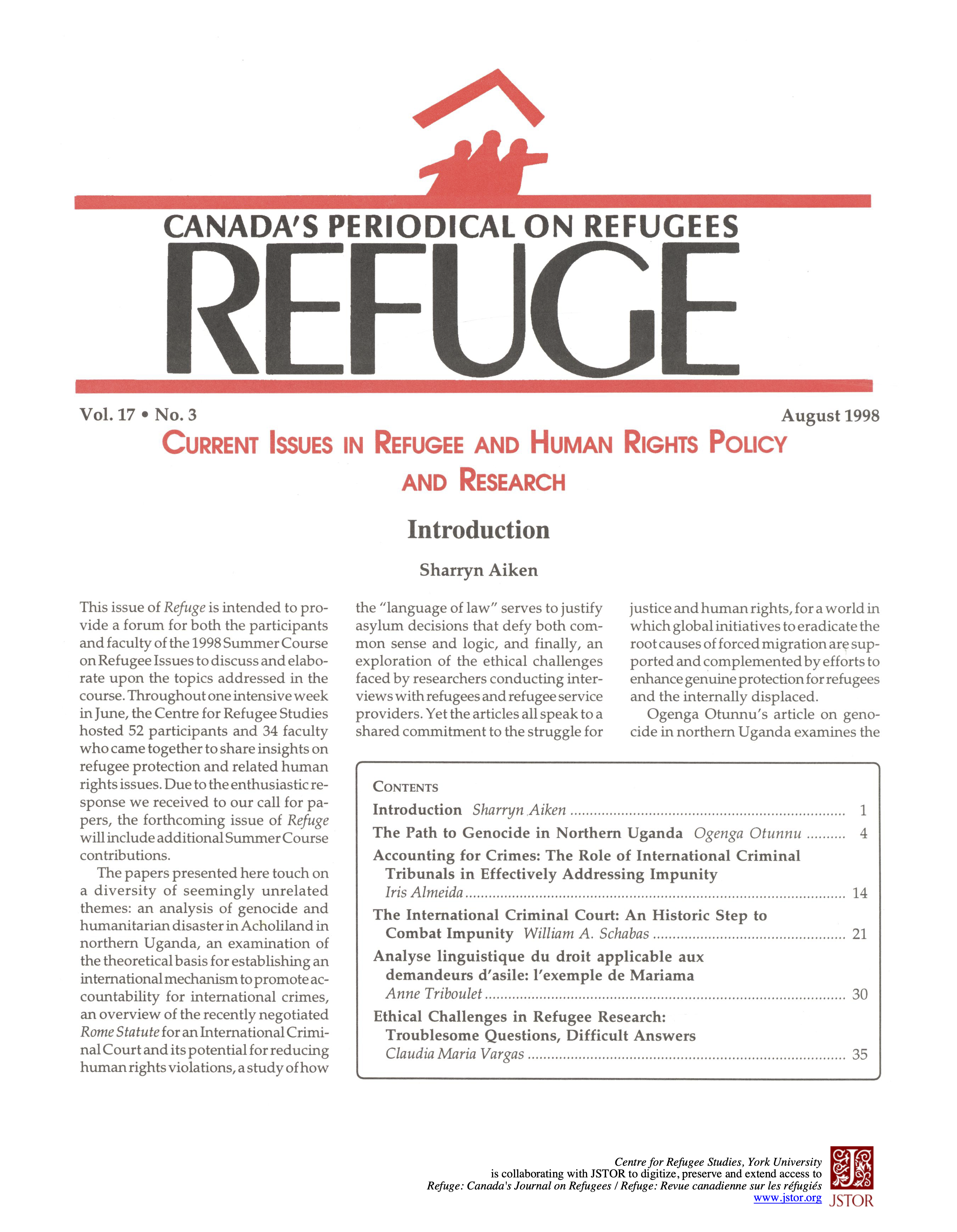The Path to Genocide in Northern Uganda
DOI:
https://doi.org/10.25071/1920-7336.21969Keywords:
Acholiland, Uganda, forced migration, conflict, genocide, politics, governance, international responseAbstract
Uganda, as a territorial state, is the "child" of the late nineteenth century European expansionist violence. Since the construction and consolidation of the despotically strong but infrastructurally weak state, the country has witnessed intense political violence, gross violations of human rights, destruction of property, internal displacement and refugee migrations. Today, Acholiland in northern Uganda is ravaged by a genocidal war, internal displacement, refugee migrations, humanitarian disaster and other forms of systematic violations of human rights. Yet, these crises have not received adequate attention from scholars, policymakers, human rights organizations and the rest of the international community. What are the causes of the crises? Why do the crises persist? Who are the protagonists? What are the effects of the crises on the society? Why has the international community failed to respond to the genocide and humanitarian disaster? These are sorne of the questions this article will attempt to address.
Metrics
Downloads
Published
How to Cite
Issue
Section
License
Copyright (c) 1998 Ogenga Otunnu

This work is licensed under a Creative Commons Attribution-NonCommercial 4.0 International License.
Refuge authors retain the copyright over their work, and license it to the general public under the Creative Commons Attribution-Non Commercial License International (CC BY-NC 4.0). This license allows for non-commercial use, reproduction and adaption of the material in any medium or format, with proper attribution. For general information on Creative Commons licences, visit the Creative Commons site. For the CC BY-NC 4.0 license, review the human readable summary.







